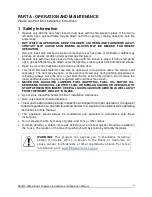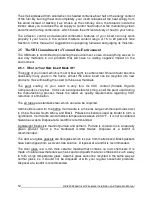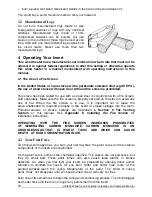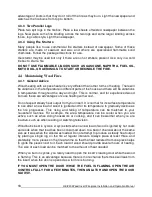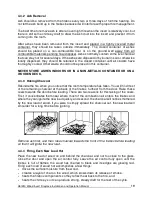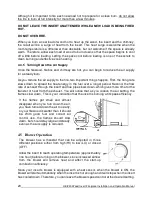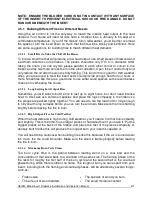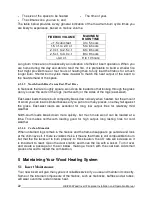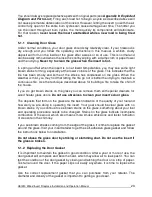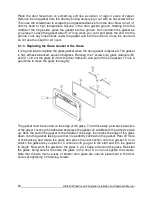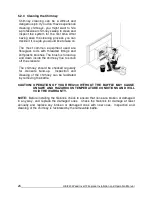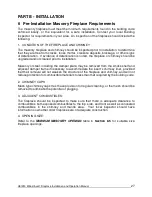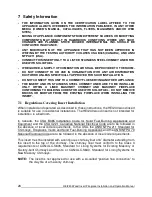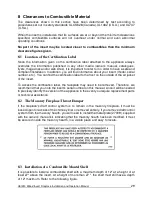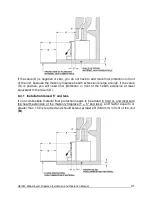
16
HEI240 Wood Insert Fireplace Installation and Operation Manual
•
burn a piece; wet wood hisses and sizzles in the fire and dry wood does not.
You could buy a wood moisture meter to test your firewood.
3.2
Manufactured Logs
Do not burn manufactured logs made of wax
impregnated sawdust or logs with any chemical
additives. Manufactured logs made of 100%
compressed sawdust can be burned, but use
caution in the number of these logs burned at one
time. Start with one manufactured log and see how
the insert reacts. Never use more than two
manufactured logs.
4
Operating Your Insert
This wood heater has a manufacturer-set minimum low burn rate that must not be
altered. It is against federal regulations to alter this setting or otherwise operate
this wood heater in a manner inconsistent with operating instructions in this
manual.
4.1 The Use of a Fire Screen
In the United States or in provinces with a particulate emission limit (eg US EPA),
the use of wood stoves with open door with and fire screen is prohibited.
This stove has been tested for use with an open door in conjunction with a fire screen,
sold separately. Make sure the fire screen is properly secured on the stove to avoid any
risk of fire. When the fire screen is in use, it is important not to leave the
stove unattended to respond promptly in the event of smoke spillage into the room.
Potential causes of smoke spillage are described in
Section 9 The Venting
System
of this manual. See
Appendix
6
:
Installing the Fire Screen
for
installation instructions.
OPERATING
WITH
THE
FIRE
SCREEN
INCREASES
POSSIBILITIES
OF GENERATING
CARBON
MONOXIDE.
CARBON
MONOXIDE
IS
AN
ODOURLESS GAS THAT IS HIGHLY TOXIC AND WHICH CAN CAUSE
DEATH AT HIGH CONCENTRATION IN AIR.
4.2
Your First Fires
Two things will happen as you burn your first few fires; the paint cures and the internal
components of the insert are conditioned.
As the paint cures, some of the chemicals vaporize. The vapors are not poisonous, but
they do smell bad. Fresh paint fumes can also cause false alarms in smoke
detectors. So, when you first light your insert, be prepared by opening doors and/or
windows to ventilate the house. As you burn hotter and hotter fires, more of the
painted surfaces reach the curing temperature of the paint. The smell of curing
paint does not disappear until you have burned one or two very hot fires.
Burn one or two small fires to begin the curing and conditioning process. Then build bigger
and hotter fires until there is no longer any paint smell from the insert.





